- Home
- Equipment Reviews
-
Amplification Digital Integrated Mono Block Preamplifier Phono Solid State Tube Analog Sources Cartridges Tape Tone Arms Turn Tables Digital Sources Digital Disc Players DACs Music Servers Streaming Music Services
-
Accessories Power Conditioners Room Accoustics Racks & Stands Audio Software Other iPod iPod Speakers iPod Headphones iPod Transports Headphones Over Ear On Ear In Ear Headphone Amplifier
-
- Audio News
- Event Reports
- California Audio Show, San Francisco
- Consumer Electronics Show
- T.H.E. Show
- Rocky Mountain Audio Fest
- AXPONA
- Salon Son & Image
- Hi-Fi Show & AV Expo
- High End
- Lone Star Audio Fest
- Capital Audio Fest
- TAVES - Toronto Audio Video Entertainment Show
- AK Fest
- Home Entertainment Show
- New York Audio $ AV Show
- Open House Events
- Spotlight
- Music
- The Columns
- 2024 California Audio Show
Latest Reviews & Audio News
-
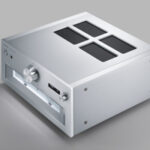
Technics SU-R1000 reference stereo integrated amplifier Review
(April 5, 2024) -
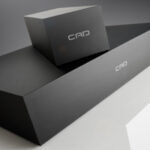
Computer Audio Design GC 1.1 & GC3.1 Ground Control external grounding systems Review
(April 5, 2024) -
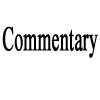
Andy Grove of Audio Note UK on IO LTD
(March 23, 2024) -
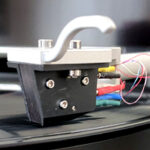
Audio Note UK IO Limited field-coil cartridge system Review
(March 26, 2024) -

EMM Labs MTRX monoblock Input Board Upgrade Review
(March 7, 2024) -

May 2018 Sibelius Violin Concerto concert video via Berliner Philharmoniker Digital Concert Hall app
(February 16, 2024) -
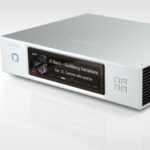
Aurender N20 Ultra High Performance digital output network transport Review
(February 15, 2024) -
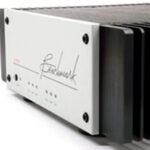
Benchmark Media AHB2 THX AAA stereo amplifiers Review
(January 18, 2024) -

Nelson Pass Interview 2023
(December 6, 2023) -

Interview with singer, pianist Fiona Joy Hawkins and singer, violinist Rebecca Daniel at 2023 CAS
(October 10, 2023) -
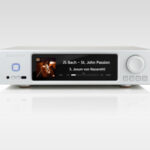
Aurender A20 reference analog output network player Review
(September 27, 2023) -
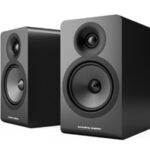
Acoustic Energy AE100² bookshelf speakers Review
(September 11, 2023) -
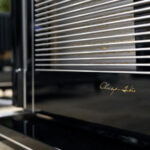
Clarisys Audio Minuet planar ribbon speaker system Review
(August 19, 2023) -

Clarisys Audio Interview
(August 7, 2023) -
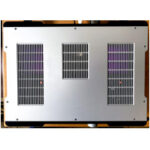
Bricasti Design M21 dual-mono DSD, Ladder and Delta Sigma DAC Review
(December 9, 2023)
-
Categories
-
Amplification Digital Integrated Mono Block Preamplifier Phono Solid State Tube Analog Sources Cartridges Tape Tone Arms Turn Tables Digital Sources Digital Disc Players DACs Music Servers Streaming Music Services
-
Accessories Power Conditioners Room Accoustics Racks & Stands Audio Software Other iPod iPod Speakers iPod Headphones iPod Transports Headphones Over Ear On Ear In Ear Headphone Amplifier
Site Sections
Copyright ©1996-2024 All Rights Reserved.
Popups Powered By : XYZScripts.com

Listening Impressions – Session 1
It was obvious a few notes into the Stanley Clarke that bass was fast, clean and had excellent leading edge definition with no perceptible overhang. Tom Jones’ voice was quite nice, the high hat was clear and imaging was precise. The horn, drums and flute on the Charlie Byrd were also nicely handled. In each instance the drum kit was extremely realistic, tight with a significant ability to move air that I would not have expected given the rather small 10” woofer used in the Kawero.
The RAAL ribbon tweeters used in the Kaiser Kawero Classic were clearly responsible for the top end, but I questioned why the bass was as good as it was. My host then explained that a key element in the sound of the system in his room was the Sonorus Audio ProximitySub Controller, an outboard analogue control box that can be used with specific recommended subwoofers of your choice. When properly set up, the Sonorus Audio ProximitySub Controller restores what is lost in the bass between the speakers and the listening position. This was particularly evident on the Charlie Byrd recording where my host switched the ProximitySub Controller in and out of the system. With the ProximitySub Controller in the system, the drum kit was extremely realistic, tight with significant movement of air. Without the ProximitySub Controller in the system, the limitations of the 10” Kawero woofer were more evident (3 db down at 55 Hz, limited ability to move air).
The Sonorus Audio ProximitySub Controller is not intended to extend the bottom end. Instead, it compensates for air velocity lost between the speaker and the listening position. Each ProximitySub Controller requires a custom onsite installation during which Arian Jansen, the designer and his assistant determine the ideal placement of the subwoofer in the listening room and the ideal settings for the ProximitySub Controller. All of this is in the analog domain and affects only the signal going to the subwoofer. The signal going to the main speakers never goes through the ProximitySub Controller.
At this point, we interrupted the listening for lunch and a drive in my host’s Porsche 911 GT3. Lunch was at a local hole in the wall seafood restaurant and was superb. We then returned to my host’s home to finish the listening session. As I quickly learned, he had saved the best for last. The penultimate record was the ORG reissue of the Albeniz. The imaging was holographic. The tonal balance was lovely and notes were crystal clear. There was an occasional touch of leanness, coupled with an occasional tendency of particular instruments to be somewhat forward on the sound stage. Surface noise from the record (what little there was) was decoded in front of the plane of the speakers, separate from the musical event which was behind the speakers, an indication of the accuracy of the system, particularly with respect to timing and phase. The final selection was the Electric Recording Company reissue of the Beethoven Violin Concerto in D Major. Originals of this Columbia SAX are highly sought after on the collector market. While I have never heard the original, the reissue is breathtaking. Surfaces were dead quiet, imaging was precise and three dimensional, but more importantly Kogan is a master of the violin. If the mark of a good system is that it conveys the emotional content of the original performance, then this system was truly superb.
Final Thoughts
Subsequent to the listening session, I was able to speak with Arian Jansen, the designer who was able to shed some light on what the Sonorus Audio ProximitySub Controller actually does. Arian first explained that the most difficult room anomalies to correct were those below 180 Hz: “The synergy between velocity and pressure of the sound wave is lost because of interactions between the speakers and the room.”
The ProximitySub Controller is designed to restore the natural pressure envelope caused by mostly even harmonics in real live music. The unit has three controls that are user adjustable: volume, phase, parametric shift/ equalization. When Arian installs a ProximitySub Controller in a system, before the Controller is actually hooked up, he spends a significant amount of time optimizing the location of the main speakers to achieve the best phase coherence that the speakers are capable of in the listening room and thus the best imaging precision. Then he runs a series of tests, to optimize phase and frequency by adjusting the controls on the unit. Note: a) that this is not an easy process as changing one setting may impact the other two and b) the speakers can be set up without concern about the best position in the room for bass, which will be compensated by the ProximitySub system.
When used with the Kawero speakers, the Sonorus Audio ProximitySub Controller did make a fundamental difference in the sound. The bass was clearer, cleaner with better leading edge definition. The Controller did not make the volume of the bass louder, but did seem to make the sound fuller or richer, and the bass clearer, better defined and faster. In the same manner as a result of the restored pressure envelope of the music, upper frequencies, particularly in the voice range, also seemed to benefit. Imaging also benefitted, particularly focus. There is also a significant increase in the ability to hear the acoustic space in which the recorded event occurred assuming that information is on the recording.